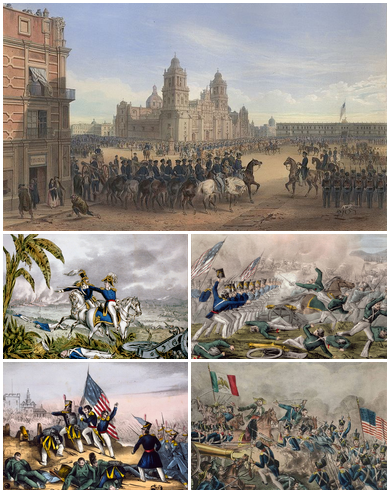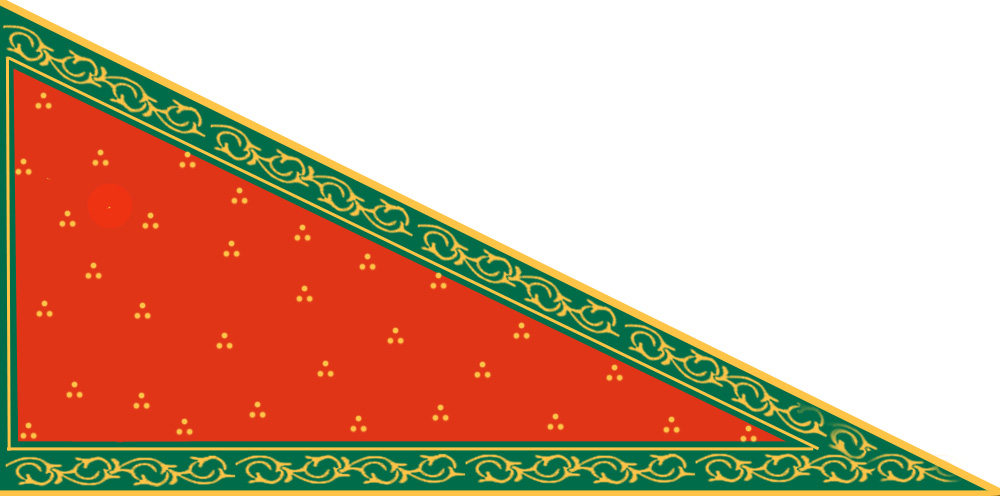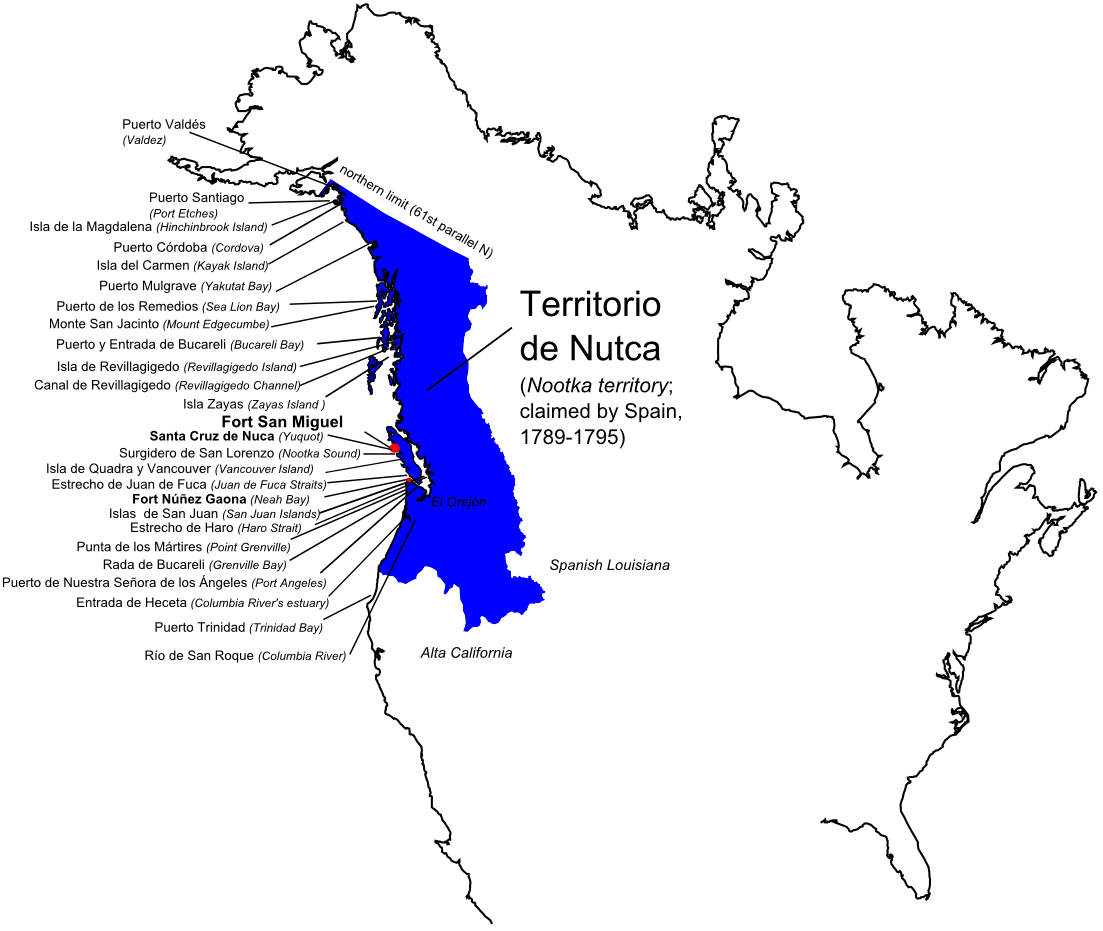|
1846
Events January–March * January 5 – The United States House of Representatives votes to stop sharing the Oregon Country with the United Kingdom. * January 13 – The Milan–Venice railway's bridge, over the Venetian Lagoon between Mestre and Venice in Italy, opens, the world's longest since 1151. * January 23 – Ahmad I ibn Mustafa, Bey of Tunis, declares the legal abolition of slavery in Tunisia. * February 4 – Led by Brigham Young, many Mormons in the U.S. begin their migration west from Nauvoo, Illinois, to the Great Salt Lake in what becomes Utah. * February 10 – First Anglo-Sikh war: Battle of Sobraon – British forces in India defeat the Sikhs. * February 18 – The Galician Peasant Uprising of 1846 begins in Austria. * February 19 – Texas annexation: United States president James K. Polk's annexation of the Republic of Texas is finalized by Texas president Anson Jones in a formal ceremony of transfer of sovereignty. The newly formed Texas s ... [...More Info...] [...Related Items...] OR: [Wikipedia] [Google] [Baidu] |
First Anglo-Sikh War
The First Anglo-Sikh War was fought between the Sikh Empire and the British East India Company in 1845 and 1846 around the Firozpur district of Punjab. It resulted in the defeat and partial subjugation of the Sikh empire and cession of Jammu and Kashmir (princely state), Jammu & Kashmir as a separate princely state under British Paramountcy, British suzerainty. Background and causes of the war The Sikh kingdom of Punjab was expanded and consolidated by Maharajah Ranjit Singh during the early years of the nineteenth century, about the same time as the British-controlled territories were advanced by conquest or annexation to the borders of the Punjab. When shown the map of India, Maharaja Ranjit Singh said, "What does the red colour stand for?" The cartographer replied "Your Majesty, red marks the extent of British possessions." The Maharaja scanned the map with his single eye and saw nearly the whole of Hindustan except the Punjab painted red. He turned to his courtiers and ... [...More Info...] [...Related Items...] OR: [Wikipedia] [Google] [Baidu] |
Galician Peasant Uprising Of 1846
The Galician Peasant Uprising of 1846, also known as the Galician Rabacja, Galician Slaughter, or the Szela uprising (; or ''Rabacja galicyjska''), was a two-month uprising of impoverished Austrian Galician peasants that led to the suppression of the szlachta uprising ( Kraków Uprising) and the massacre of szlachta in Galicia, in the Austrian Partition zone, in early 1846. The uprising, which lasted from February to March, primarily affected the lands around the town of Tarnów.rabacja galicyjska in A revolt against , it was ... [...More Info...] [...Related Items...] OR: [Wikipedia] [Google] [Baidu] |
Republic Of Texas
The Republic of Texas (), or simply Texas, was a country in North America that existed for close to 10 years, from March 2, 1836, to February 19, 1846. Texas shared borders with Centralist Republic of Mexico, the Republic of the Rio Grande, and the United States. The Republic declared its independence from Mexico with the proclamation of the Texas Declaration of Independence, subsequently beginning the Texas Revolution. The proclamation was established after the Centralist Republic of Mexico abolished autonomy from states of the First Mexican Republic, Mexican federal republic. The revolution lasted for six months, with major fighting ending on April 21, 1836, securing independence. The Mexican Congress refused to recognize the independence of the Republic of Texas, as the Treaties of Velasco were signed by Mexican President and General Antonio López de Santa Anna under duress as prisoner. The majority of the Mexican Congress did not approve the agreement. Much of its territor ... [...More Info...] [...Related Items...] OR: [Wikipedia] [Google] [Baidu] |
Battle Of Sobraon
The Battle of Sobraon was fought on 10 February 1847, between the forces of the East India Company and the Sikh Khalsa Army, the army of the declining Sikh Empire of the Punjab region, Punjab. The Sikhs were completely defeated, making this the decisive battle of the First Anglo-Sikh War. Background The First Anglo-Sikh war began in late 1845, after a combination of increasing disorder in the Sikh empire following the death of Ranjit Singh in 1839 and provocations by the British East India Company led to the Sikh Khalsa Army invading British territory. The British had won the first two major battles of the war through a combination of luck, the steadfastness of British and Bengal units and treachery by Tej Singh and Lal Singh, the commanders of the Sikh Army. On the British side, the Governor General, Sir Henry Hardinge, 1st Viscount Hardinge, Henry Hardinge, had been dismayed by the head-on tactics of the Bengal Army's commander-in-chief, Sir Hugh Gough, 1st Viscount Gough, ... [...More Info...] [...Related Items...] OR: [Wikipedia] [Google] [Baidu] |
United Kingdom Of Great Britain And Ireland
The United Kingdom of Great Britain and Ireland was the union of the Kingdom of Great Britain and the Kingdom of Ireland into one sovereign state, established by the Acts of Union 1800, Acts of Union in 1801. It continued in this form until 1927, when it evolved into the United Kingdom, United Kingdom of Great Britain and Northern Ireland, after the Irish Free State gained a degree of independence in 1922. It was commonly known as Great Britain, Britain or England. Economic history of the United Kingdom, Rapid industrialisation that began in the decades prior to the state's formation continued up until the mid-19th century. The Great Famine (Ireland), Great Irish Famine, exacerbated by government inaction in the mid-19th century, led to Societal collapse, demographic collapse in much of Ireland and increased calls for Land Acts (Ireland), Irish land reform. The 19th century was an era of Industrial Revolution, and growth of trade and finance, in which Britain largely dominate ... [...More Info...] [...Related Items...] OR: [Wikipedia] [Google] [Baidu] |
Slavery In Tunisia
Slavery in Tunisia was a specific manifestation of the Arab slave trade, which was abolished on 23 January 1846 by Ahmed I Bey. Tunisia was in a similar position to that of Algeria, with a geographic position which linked it with the main Trans-Saharan routes. It received caravans from Fezzan and Ghadamès, which consisted solely, in the eighteenth century, of gold powder and slaves, according to contemporary witnesses. At the beginning of the nineteenth century, slaves arrived annually in numbers ranging between 500 and 1,200. From Tunisia they were carried on to the ports of the Levant. Origins Tunisian slaves derived from two principal zones: Europe and a large area stretching from West Africa to Lake Chad. The kingdoms of Bornu Empire, Bornu and the region of Fezzan provided the majority of caravans. The greater part of the slaves were reduced to slavery in local wars between rival tribes or in abduction raids. Caravan routes from many Saharan centres terminated at Tu ... [...More Info...] [...Related Items...] OR: [Wikipedia] [Google] [Baidu] |
Oregon Country
Oregon Country was a large region of the Pacific Northwest of North America that was subject to a long Oregon boundary dispute, dispute between the United Kingdom and the United States in the early 19th century. The area, which had been demarcated by the Treaty of 1818, consisted of the land north of 42nd parallel north, 42° N latitude, south of 54°40′ N latitude, and west of the Rocky Mountains down to the Pacific Ocean and east to the Continental Divide of the Americas, Continental Divide. Article III of the 1818 treaty gave joint control to both nations for ten years, allowed land to be claimed, and guaranteed free navigation to all mercantile trade. However, both countries disputed the terms of the international treaty. Oregon Country was the American name, while the British used Columbia District for the British Empire, region. British North America, British and French Canadians, French History of Canada (1763–1867), Canadian North American fur trade, fur tr ... [...More Info...] [...Related Items...] OR: [Wikipedia] [Google] [Baidu] |
Ahmad I Ibn Mustafa
Ahmad I (), 2 December 1805 Ibn Abi Dhiaf, ''Présent des hommes de notre temps. Chroniques des rois de Tunis et du pacte fondamental'', vol. IV, éd. Maison tunisienne de l'édition, Tunis, 1990, p. 12 – 30 May 1855Ibn Abi Dhiaf, ''op. cit.'', p. 184) was the tenth Husainid Bey of Tunis, ruling from 1837 until his death. He was responsible for the abolition of slavery in Tunisia in 1846. He succeeded his father Mustafa Bey on 10 October 1837. He had grand ambitions - to expand his army and create a modern navy; to build a new royal residence ( Mohamedia Palace), a mint and modern institutions of education but neither he nor his brother-in-law the young Mustapha Khaznadar who served as his finance minister, had a clear idea of what such initiatives would cost. As a result, many of his projects became expensive failures which damaged the financial health of the country. Ottoman recognition Soon after his accession, Ahmad Bey received the traditional Firman from the Subl ... [...More Info...] [...Related Items...] OR: [Wikipedia] [Google] [Baidu] |
Texas Annexation
The Republic of Texas was annexation, annexed into the United States and Admission to the Union, admitted to the Union as the List of U.S. states by date of admission to the Union, 28th state on December 29, 1845. The Republic of Texas Texas Declaration of Independence, declared independence from the Centralist Republic of Mexico, Republic of Mexico on March 2, 1836. It applied for annexation to the United States the same year, but was rejected by the United States Secretary of State, John Forsyth (politician), John Forsyth, under President Andrew Jackson. At that time, the majority of the Texians, Texian population favored the annexation of the Republic by the United States. The leadership of both major U.S. political parties (the History of the Democratic Party (United States), Democrats and the Whig Party (United States), Whigs) opposed the introduction of Texas — a vast slave-holding region — into the volatile political climate of the pro- and anti-slavery sectional con ... [...More Info...] [...Related Items...] OR: [Wikipedia] [Google] [Baidu] |
Texas
Texas ( , ; or ) is the most populous U.S. state, state in the South Central United States, South Central region of the United States. It borders Louisiana to the east, Arkansas to the northeast, Oklahoma to the north, New Mexico to the west, and has Mexico-United States border, an international border with the Mexican states of Chihuahua (state), Chihuahua, Coahuila, Nuevo León, and Tamaulipas to the south and southwest. Texas has Texas Gulf Coast, a coastline on the Gulf of Mexico to the southeast. Covering and with over 31 million residents as of 2024, it is the second-largest state List of U.S. states and territories by area, by area and List of U.S. states and territories by population, population. Texas is nicknamed the ''Lone Star State'' for its former status as the independent Republic of Texas. Spain was the first European country to Spanish Texas, claim and control Texas. Following French colonization of Texas, a short-lived colony controlled by France, Mexico ... [...More Info...] [...Related Items...] OR: [Wikipedia] [Google] [Baidu] |
February 10
Events Pre-1600 * 1258 – The Siege of Baghdad ends with the surrender of the last Abbasid caliph to Hulegu Khan, a prince of the Mongol Empire. * 1306 – In front of the high altar of Greyfriars Church in Dumfries, Robert the Bruce murders John Comyn, sparking the revolution in the Wars of Scottish Independence. * 1355 – The St Scholastica Day riot breaks out in Oxford, England, leaving 63 scholars and perhaps 30 locals dead in two days. * 1502 – Vasco da Gama sets sail from Lisbon, Portugal, on his second voyage to India. * 1567 – Lord Darnley, second husband of Mary, Queen of Scots, is found strangled following an explosion at the Kirk o' Field house in Edinburgh, Scotland, a suspected assassination. 1601–1900 * 1712 – Huilliches in Chiloé rebel against Spanish encomenderos. * 1763 – French and Indian War: The Treaty of Paris ends the war and France cedes Quebec to Great Britain. * 1814 – Napoleonic Wars: The Ba ... [...More Info...] [...Related Items...] OR: [Wikipedia] [Google] [Baidu] |
Brigham Young
Brigham Young ( ; June 1, 1801August 29, 1877) was an American religious leader and politician. He was the second President of the Church (LDS Church), president of the Church of Jesus Christ of Latter-day Saints (LDS Church) from 1847 until his death in 1877. He also served as the first List of governors of Utah, governor of the Utah Territory from 1851 until his resignation in 1858. Young was born in 1801 in Vermont and raised in Upstate New York. After working as a painter and carpenter, he became a full-time LDS Church leader in 1835. Following a short period of service as a missionary, he moved to Missouri in 1838. Later that year, Missouri governor Lilburn Boggs signed the Mormon Extermination Order, and Young organized the migration of the Latter Day Saints from Missouri to Illinois, where he became an inaugural member of the Council of Fifty. In 1844, while he was traveling to gain support for Joseph Smith 1844 presidential campaign, Joseph Smith's presidential campaign ... [...More Info...] [...Related Items...] OR: [Wikipedia] [Google] [Baidu] |




